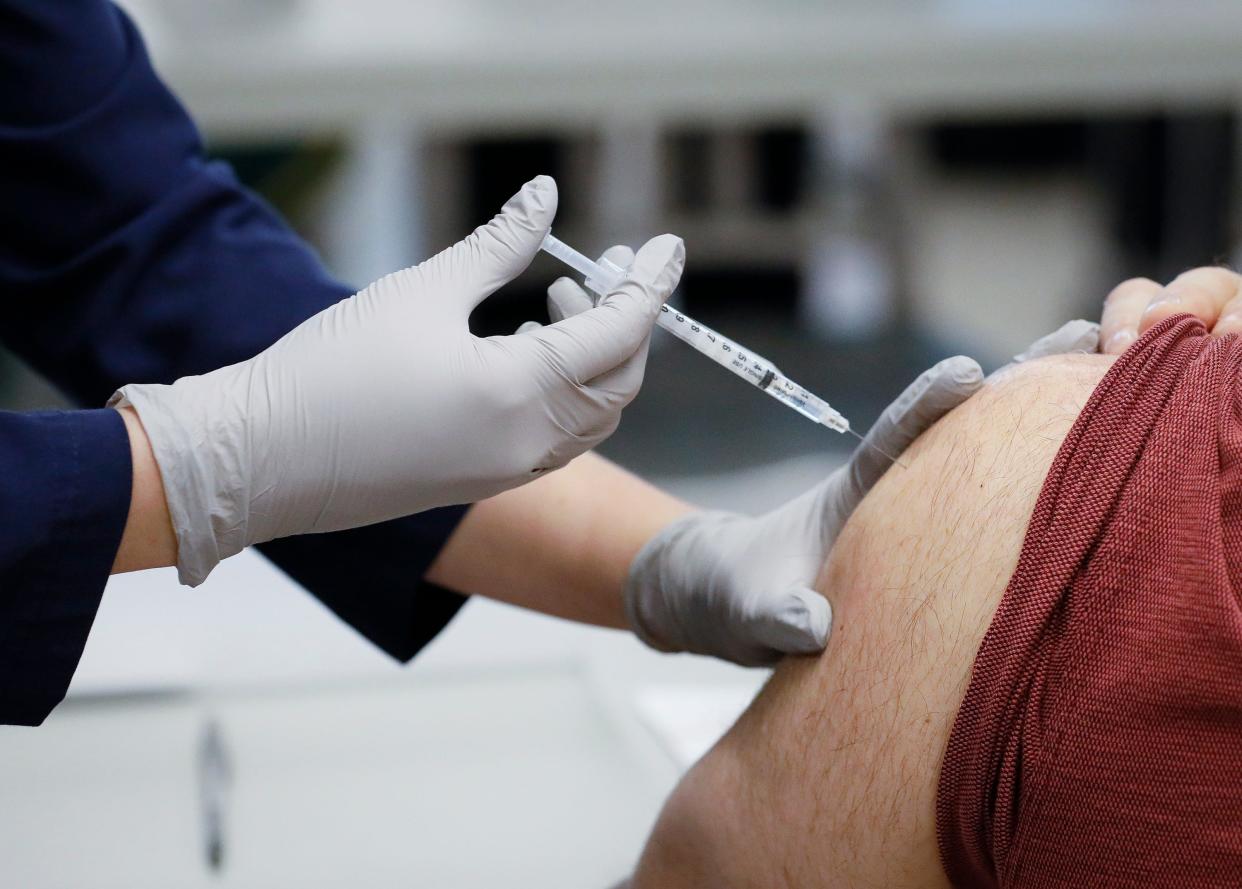Ohio's COVID-19 case reports are spiking, but all aren't being counted

- Oops!Something went wrong.Please try again later.
Reported COVID-19 cases are up in recent weeks across Ohio, but experts say the counts still underestimate the actual spread of virus cases.
The winter time, as people gather indoors more to get away from the cold weather, increases the spread of respiratory viruses, said Dr. Joe Gastaldo, an infectious disease specialist and vice president of clinical affairs at OhioHealth’s Dublin Methodist Hospital and Grady Memorial Hospital.
In addition to COVID-19, the flu and RSV (respiratory syncytial virus) are also on the rise during this time of year.
Read More: Former Dr. Roxy patients say she hurt them years before she was TikTok famous
There were 13,215 cases of COVID in Ohio during the week ending Dec. 7, according to the state’s dashboard, which is updated every Thursday.
The week before, there were 12,835, and before that, just 8,700.
Still, that’s likely an undercount, said Gastaldo, due to positive at-home tests that should be reported but often aren't and people who have symptoms but aren’t testing.
“It is a gross underestimation of what’s happening activity-wise,” Gastaldo said of the official count.
Instead, Gastaldo relies on more reliable reports, such as the viral load found in wastewater testing, emergency department visits, and hospitalizations for respiratory illness.
He expects the cases of COVID and other flu-like illnesses, including the flu, to go up and said at OhioHealth, they’re seeing more emergency department visits, which Franklin County data also shows.
Though, the number of visits is nowhere near where it was during the Omicron variant surge at the end of 2021, he said.
“We’re seeing a small rise in people being admitted with COVID,” Gastaldo said. “It’s typically people who are elderly, very frail and with weakened immune systems.”
Overall this year, there were 279,172 cases in Ohio; 11,046 hospitalizations and 1,772 deaths. This past week, 47 people died in the state, according to the state dashboard. The week before, there were 36 deaths and the week before that, 48.
How to protect yourself and others
Gastaldo encouraged people to get vaccinated against the flu and get updated vaccines for COVID-19, as well as for RSV, a virus that causes inflammation of the small airways in the lungs and can lead to pneumonia, if eligible.
The vaccines don't stop all transmission, but they lower it. They don't stop people from getting ill, but lessen the illness.
“The reason to get them is that they defang the virus, meaning that if you do get an infection, you’re very likely to only have mild symptoms and you’re significantly less likely to die or be hospitalized for these viruses,” he said.
If people are unsure or skeptical about vaccines, he encouraged them to speak to a trusted health care provider about them.
And, if people aren’t feeling well, they should stay home to protect vulnerable people in the community.
Gastaldo also encouraged people to get tested for COVID. People can get free tests sent to their homes via www.covid.gov.
There is also testing for the flu and the benefit to getting tested for both is the possibility to qualify for antiviral treatment, he said.
Masks are no longer mandated, but they do serve a purpose, Gastaldo said.
“It’s good advice to wear a mask if you have an at-risk condition or are immunocompromised,” he said. And, if you have symptoms or are indoors with a lot of people.
Otherwise, wash your hands, practice good coughing etiquette by covering your cough, and stock up on over-the-counter treatments like painkillers.
dking@dispatch.com
@DanaeKing
This article originally appeared on The Columbus Dispatch: Ohio COVID-19 cases are up. Will they spike more? What doctors say

